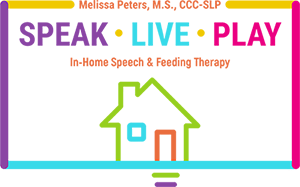What is Occupational Therapy?
Occupational therapy is a broad field of medicine that caters to children, middle-aged folks, and the elderly alike. Its sole purpose is to help individuals afflicted by mental and physical disabilities, injuries, and pain to participate in their normal daily activities without the discomfort and inconvenience caused by their condition.
Occupational therapy is often sought by parents of children with behavioral issues, adults with injuries, and seniors with chronic conditions. An occupational therapist can help kids, adults, and seniors to acquire or regain the skills needed for the activities of daily life.
OT for kids, adults, and seniors must complete special graduate training, pass a national exam, and obtain a license before they can start practicing. In many cases, OTs specializes in specific medical niches such as kid’s therapy, adult therapy, or senior care. It is, in essence, a broad field.
Occupational Therapy for Kids
Occupational therapy can be recommended for any child that shows delays in mastering common activities at home or at school. It is also a viable avenue to explore if your child’s behavior is not consistent with their age, i.e., if they are slow to catch up on things that other kids their age can comfortably do.
OTs address a litany of behavioral and developmental issues in kids. They mostly focus on a child’s attention span, sensory processing skills, activities of daily living (the aforementioned ADLs), visual-perceptual skills, and fine and gross motor skills.
What are Sensory Processing Issues?
A child experiencing sensory processing issues may benefit from occupational therapy. This therapy focuses on helping individuals develop or regain the skills needed for daily activities through targeted interventions. For instance, occupational therapists may work with hypersensitive children to help them manage aversions to sensory triggers like light, sound, taste, touch, and smell. Conversely, they may assist hyposensitive children in learning appropriate ways to seek sensory stimulation without disrupting others or being perceived as disruptive. By addressing these sensory challenges, occupational therapy can significantly improve a child’s ability to engage in social settings, concentrate in class, and participate in daily activities.How Occupational Therapy Helps Kids with Sensory Issues
An occupational therapist may take different approaches when dealing with hypersensitive and hyposensitive kids. For the over-stimulated child, they may recommend seating and testing in separate rooms where stimuli can be regulated to prevent sensory overload.
As for the under-sensitive child, OTs recommend working in sensory environments like gyms where they can participate in swinging, jumping on trampolines, and crashing into beanbags. In a school environment, they may recommend periodic sensory breaks where the child gets to perform some physical activity, be it walking, stretching, or some light exercises like jumping jacks.
Hyposensitive kids can also benefit from fidgets and jewelry. Some products like chewable pencil tops can help calm them down and direct their focus to the task at hand.
Although controversial, brushing the skin and doing joint compressions are two very effective methods of calming down hyposensitive children. These actions are said to “rewire” the brain, allowing children to appropriately experience and respond to sensory stimulation.
It might not be easy to decide whether a child is hypersensitive or hyposensitive, but experts suggest that children who perform better in certain settings and worse in others may be projecting the signs of a sensory processing issue.
How Occupational Therapy Helps Kids with Motor Skills
Fine Motor Skills
Kids that suffer from poor fine motor skills are often incapable of handling pencils and pens, whether writing or drawing and doing intricate tasks such as stringing beads together and using scissors.
A lack of fine motor skills can impede their ability to participate in simple academic activities. Even turning a page can be a chore to a child with underdeveloped fine motor skills.
Fine motor skills aren’t just necessary in the academic life of a child, they’re also useful in the participation of ADLs. Using cutlery, buttoning their shirt, and zipping their pants/bags are three common activities that can seem insurmountable to a child who is struggling with their fine motor skills.
OTs use various “fun” methods to help children retain or acquire fine motor skills. For example, they use the dot-dot paint activity to consolidate the child’s pincer grasp (the thumb and forefinger hold), which makes them better at handling pens, pencils, and utensils.
More often, OTs give the kids bubble wrap, or ask them to perform specific activities like picking up coins using one hand or lacing their shoes. Not only do these activities teach children to manipulate small objects better, but they also improve their visual focus.
Developing fine motor skills may sometimes require board games like Operation, especially for preschoolers. The use of tweezers hones their pincer grasp and gives them a more steady hold. Other OTs use Thera putty of varying resistance levels to help kids build finger strength and improve hand dexterity.
Gross Motor Skills
When a child’s gross motor skills are lacking, they will struggle with movement, balance, strength, coordination, and endurance. All these directly affect their ability to walk, run, jump, hop, throw, and catch items. These eventually impede them from taking part in recess and after-school sports, gradually lowering their self-esteem. A child will eventually become withdrawn if they can’t participate in the same activities as their friends.
To remedy this, most OTs start by asking them to throw and catch differently sized balls. They may also recommend obstacle courses, which can drastically improve balance and coordination.
For building strength and endurance, OTs may provide a tricycle. In some cases, an OT will partner with a physiotherapist as the development of gross motor skills relies on techniques used in both professions.
They also address low muscle tone and lack of core strength, which can make it harder for a child to sit erect. Sitting with the right posture can improve participation in class and boost focus and alertness. Some of the remedies an OT may use to help a child build core strength and endurance include therapy balls, curls, and crab walking.
How Occupational Therapists Teach Kids Self-Reliance (Self-Help Skills)
Learning self-help skills requires mastery of fine motor skills. Most of the skills that make children self-reliant depend on them. For example, a child needs to learn how to button and zip their clothes, and how to tie their shoelaces if they are to learn how to dress and undress independently.
Similarly, grooming requires knowledge on how to brush or comb hair, brushing teeth, and using the loo. Even eating requires a lot of motor skills as children learn how to hold and use various utensils. An occupational therapist will deploy various techniques to help kids practice and master these basic yet essential skills.
Things get a little more complicated when a child suffers from sensory processing issues as well. It may take extra therapy to teach self-help skills to a child who’s uncomfortable with being wet, or wearing constrictive clothes.
 Some kids cannot stand having anything in their mouth—obviously a massive obstacle to the development and refinement of their ADLs. Fortunately, there are strategies that make these processes a little less strenuous for the child. For instance, going shopping during off-peak hours may be more conducive to a hypersensitive child, while switching toothpaste may reduce their aversion to brushing their teeth.
Some kids cannot stand having anything in their mouth—obviously a massive obstacle to the development and refinement of their ADLs. Fortunately, there are strategies that make these processes a little less strenuous for the child. For instance, going shopping during off-peak hours may be more conducive to a hypersensitive child, while switching toothpaste may reduce their aversion to brushing their teeth.
Self-help skills may take a while to develop on their own, but you shouldn’t ignore the urgency of helping your child when they seem slow on the uptake especially if it involves simple activities like wearing clothes, grooming, and feeding.
Where Can You Find an Occupational Therapist for Kids?
In most cases, kids OTs are found in schools. They are present inside and outside the classroom. In class, they monitor and work with kids to ensure that the environment they’re in is conducive and that their sensory and motor issues don’t impede their learning process.
Oftentimes, they may pull the child outside the classroom for a special one-on-one session, particularly when it involves the development of fine and gross motor skills, and to visit a sensory gym.
As a matter of fact, many OTs offer therapy from private sensory gyms. This only applies to children aged 3 years and over. Kids aged younger than 3 qualify to get home-based therapy.
Occupational Therapy for Adults
Occupational therapists not only help the kids to develop independence but also assist adults to accomplish their activities of daily living. OT for adults also helps adults in finding ways in which they can cope with cognitive and physical difficulties. This will ensure that, despite the limitations, an adult can participate in most activities fully.
 Generally, occupational therapists for adults assist the adult to develop fundamental activities in self-care activities. They also help the individual to indulge in other activities such as household chores, meal preparation, and computer use as well as leisure activities. Therapists work hand in hand with caregivers to modify these activities and working environments, allowing the elderly to indulge in various activities comfortably.
Generally, occupational therapists for adults assist the adult to develop fundamental activities in self-care activities. They also help the individual to indulge in other activities such as household chores, meal preparation, and computer use as well as leisure activities. Therapists work hand in hand with caregivers to modify these activities and working environments, allowing the elderly to indulge in various activities comfortably.
How does occupational therapy help Adults?
Occupational therapists are trained to assist adults to achieve independence in their daily activities. Caring for a kid with developmental delay, injury, and cognitive problems can be tough. It becomes even more challenging when they grow up. Unlike a child, it becomes more difficult to lift and carry an adult or even teach them to do new things. These individuals would also love to have their own personal space, and do things without needing any assistance. An occupational therapist will help these individuals get independence to get when doing various activities including;
- Moving around the house and using the steps
- Getting out and about in the neighborhood
- Showering, grooming, and other personal care activities
- Helping in household activities
- Taking part in outdoor activities such as hobbies
Adult occupational therapists also play a major role in helping adults and the elderly to maximize their safety. Here are some of the ways a therapist can help in ensuring safety.
- Recommending safe ways for doing everyday activities
- Accessing safety issues at home and providing a solution to prevent possible trip hazards
- Suggesting aids and equipment
- Offering training to caregivers
- Advising on the required modification to the home
How Adult Therapy Differs From Pediatric Therapy
So how does adult therapy differ from kid’s therapy? Well, adult and kids therapy is completely different. For instance, a two –three-year-old will obviously talk differently from a 20-year-old. A teen or adult will express their needs and thoughts in a different way a toddler will do. Besides that, adults need some privacy. Despite the mobility issues, changing diapers for a three-year-old will be different from when doing so for an 18-year-old.
While these may be suffering from the same issues, the occupational therapist needs to adapt the therapy to suit the adult’s needs. For instance, a therapist might work on how to help a 2-year-old kid to maintain focus or sit for a few minutes to do an activity. On the other hand, for a fifteen old, the therapist will help him/her to learn how to do their homework, grooming and socializing with friends. Additionally, the main problems that 30-year-olds may face are probably handling various work projects. As such, an OT for adults adapts to solve the problem depending on the individual’s span.
How occupational therapists Work With adults
With adults the things the therapist work on includes, organization, planning, computer skills, interview skills as well as strategies for handling anxiety. The therapist will customize everything to fit the role of the individual. This makes the adult feel a part of the family. By helping them gain their independence, they will not only fit in the family setting but also in society. The individuals can learn how to take care of themselves and maybe, even be employed.
Occupational therapists for seniors
Elderly occupational therapists specialize in assisting the elderly in their daily living. The therapist analyzes the patient’s condition and finds out the right activities or modifications suited to support their physical, emotional, psychological, and environmental needs. They develop specialized exercises that support the needs of the patient. Here are the main benefits of occupational therapy sessions for the elderly.
 Helps keep arthritis at bay
Helps keep arthritis at bay
OT for the elderly offers advice on the relevant modifications required to make their homes and workstations safe and comfortable. This enables the senior to deal with arthritis, allowing them to continue tackling their tasks normally. If left unchecked, arthritis pain can render a person immobile. The therapist will analyze the condition and take the relevant action.
Generally, arthritis discomfort and pain arise when the patient moves the affected joint. An occupational therapist will help the patient to position their legs, legs, and other parts into positions that are more comfortable.
Boosts memory & cognitive skills
As mentioned, with age, our brain weakens. This may lead to certain conditions such as forgetfulness and dementia. Occupational therapists for seniors also help patients to sharpen their cognitive skills and memory. While severe conditions such as dementia are irreversible, these therapists will prevent the condition from worsening.
Some of the effective exercises that help the seniors maintain sharp memory includes reading books and solving a crossword puzzle. It is always recommended to start the treatment as early as possible. However, the occupational therapist for seniors can still help in later stages, although in these stages, their focus is to improve the senior’s quality of life with simplified activities and sensory stimulation.
Improves vision
Vision loss is common in the elderly. The good news is that an occupational therapist can help reduce vision impairment. Just like physical therapy, the therapist will train the patient on various vision therapy techniques that restore proper functioning for the brain and eyes without undergoing surgery.
Elderly occupational therapy assists seniors with different eye problems such as lazy eye, double vision, dizziness, balance, reading, as well as strabismus. They begin by evaluating the damage to identify whether the vision problem is repairable or not. Thereafter, they offer customized exercises to fit the patient’s needs.
Increases movement range
As we grow old, our body becomes fragile. Particularly, age takes a toll on our bones, joints, and mental stability. Adult occupational therapists use various techniques that help the patient increase their range of motion. Also known as ROM (range of motion), these exercises help the patients to walk, lift things, and do other activities comfortably.
The exercises decrease stiffness and pain that is often caused by conditions such as arthritis. ROM exercise is different depending on the underlying condition and the body part that is affected. Nonetheless, these exercises will help the patient stretch their muscles and have an easy time while taking part in various activities.
Life transitions
Generally, we undergo numerous throughout our lives. Be as it may, the majority of the toughest transition comes into play when we get old. Seniors often go through rough transitions such as widowhood, retirement, and relocation. Sadly, the elderly are also forced to say goodbye to their friends and family who pass on before they do. Occupational therapy will help the seniors through this transition by eliminating loneliness. The OT for elderly creates activities that will help them cope with the rough transitions.
Helps to cope with chronic pain
There are various main chronic pain causes, normal aging being one of them. It is characterized by traumatic injuries, nerve damage, and injuries that take ages to heal. Unfortunately, chronic pain can lead to loss of independence, where the seniors may lose control over daily activities. Adult occupational therapists use several approaches to manage pain and discomfort. They also equip the patient with various adaptive ways to assist them to go about the daily chores. These approaches include;
- Pacing activities
- Proactive pain control
- Muscle tension reduction
- Neuromuscular reduction
- Safe body ergonomics and mechanics
A Trusted Confidante
The last thing a parent or a senior relative would want is to cause pain to a loved one. Most often, the kids take care of their ailing senior parent. And, since the parent wouldn’t want to see their kids sad, they often lie about their condition. Occupational therapists serve as a trusted confidant for seniors. Unlike speaking to their kids, a senior will not feel embarrassed to talk to an occupational therapist about some of the challenges they are going through. The best thing about this is that the therapist can find an easy solution to make the elderly patient feel comfortable. They are also trained on how to speak to the patient and make them feel better.
Conclusion
When individuals of all ages face challenges in performing daily tasks due to developmental delays, injuries, aging, or other conditions, occupational therapy can be a crucial support. Occupational therapists specialize in helping individuals—children, adults, and seniors—achieve greater independence and functionality in their daily lives. They provide tailored interventions to improve skills and abilities necessary for navigating tasks at home, school, or work. By collaborating closely with families and caregivers, occupational therapists empower patients to enhance their quality of life and build confidence in their abilities.
For personalized occupational therapy services that promote independence and well-being, reach out to Speak Live Play today!



 Helps keep arthritis at bay
Helps keep arthritis at bay

